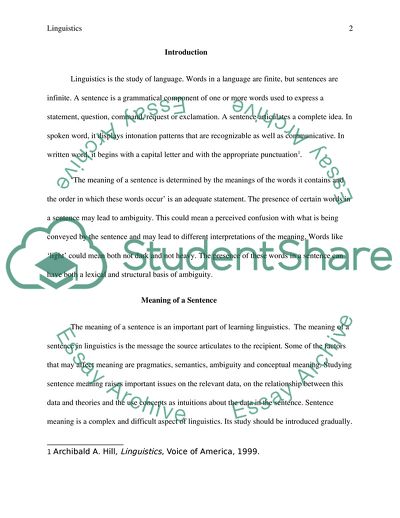Cite this document
(Linguistics, Semantics and Pragmatics Coursework, n.d.)
Linguistics, Semantics and Pragmatics Coursework. Retrieved from https://studentshare.org/humanitarian/1816155-the-meaning-of-a-sentence-is-determined-by-the-meanings-of-the-words-it-contains-and-the-order-in-which-these-words-occur-discuss-the-adequacy-of-this-statement-paying-particular-attention-to-other-factors-which-may-affect-meaning
Linguistics, Semantics and Pragmatics Coursework. Retrieved from https://studentshare.org/humanitarian/1816155-the-meaning-of-a-sentence-is-determined-by-the-meanings-of-the-words-it-contains-and-the-order-in-which-these-words-occur-discuss-the-adequacy-of-this-statement-paying-particular-attention-to-other-factors-which-may-affect-meaning
(Linguistics, Semantics and Pragmatics Coursework)
Linguistics, Semantics and Pragmatics Coursework. https://studentshare.org/humanitarian/1816155-the-meaning-of-a-sentence-is-determined-by-the-meanings-of-the-words-it-contains-and-the-order-in-which-these-words-occur-discuss-the-adequacy-of-this-statement-paying-particular-attention-to-other-factors-which-may-affect-meaning.
Linguistics, Semantics and Pragmatics Coursework. https://studentshare.org/humanitarian/1816155-the-meaning-of-a-sentence-is-determined-by-the-meanings-of-the-words-it-contains-and-the-order-in-which-these-words-occur-discuss-the-adequacy-of-this-statement-paying-particular-attention-to-other-factors-which-may-affect-meaning.
“Linguistics, Semantics and Pragmatics Coursework”, n.d. https://studentshare.org/humanitarian/1816155-the-meaning-of-a-sentence-is-determined-by-the-meanings-of-the-words-it-contains-and-the-order-in-which-these-words-occur-discuss-the-adequacy-of-this-statement-paying-particular-attention-to-other-factors-which-may-affect-meaning.


